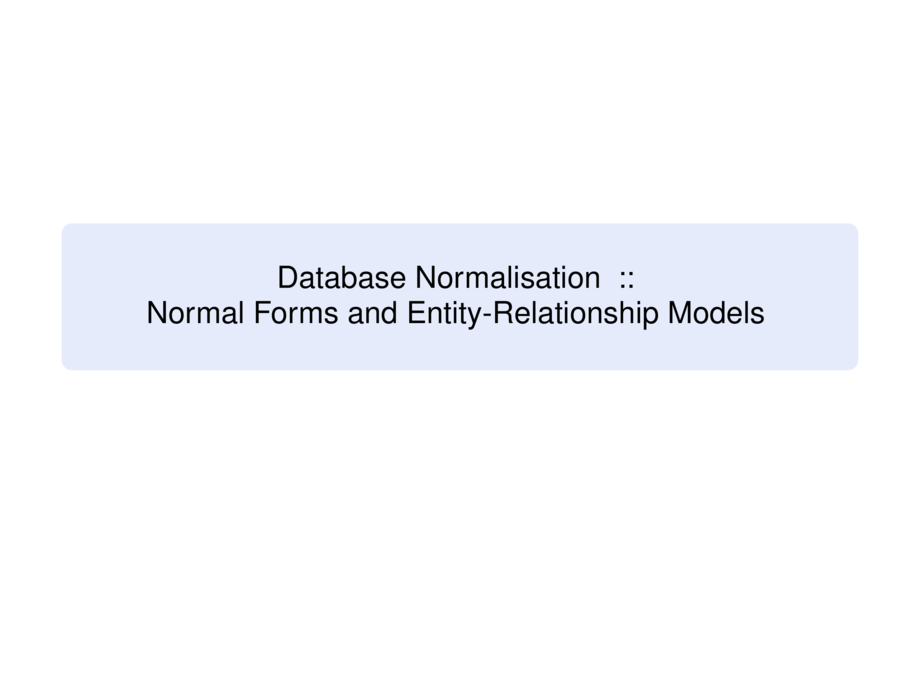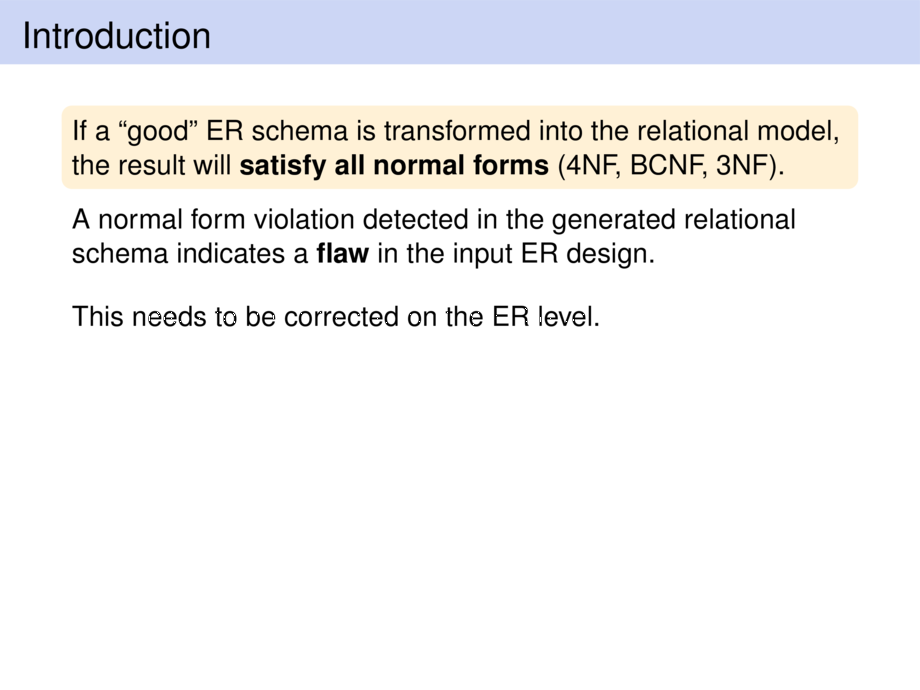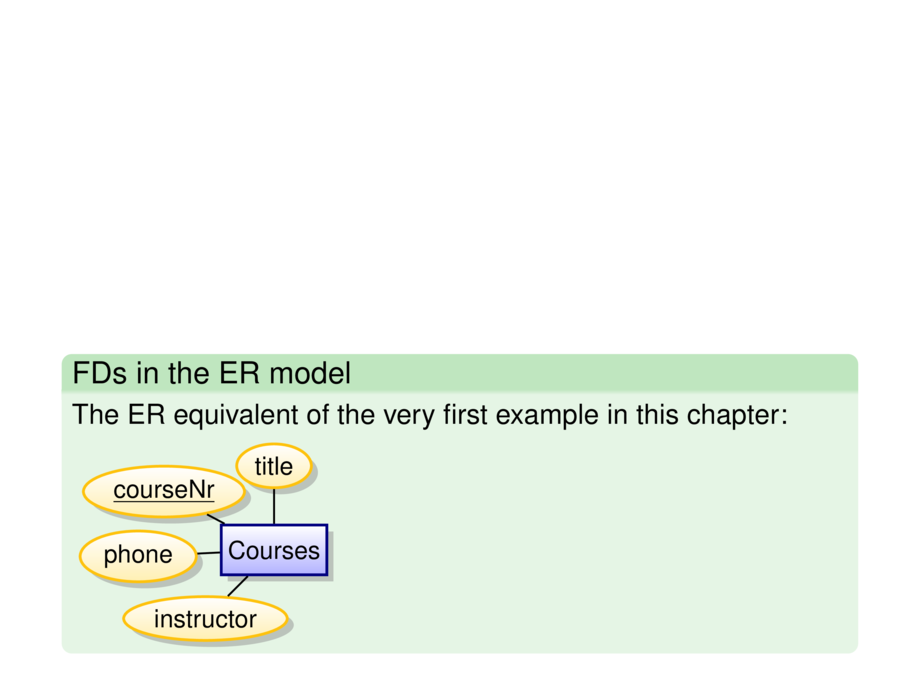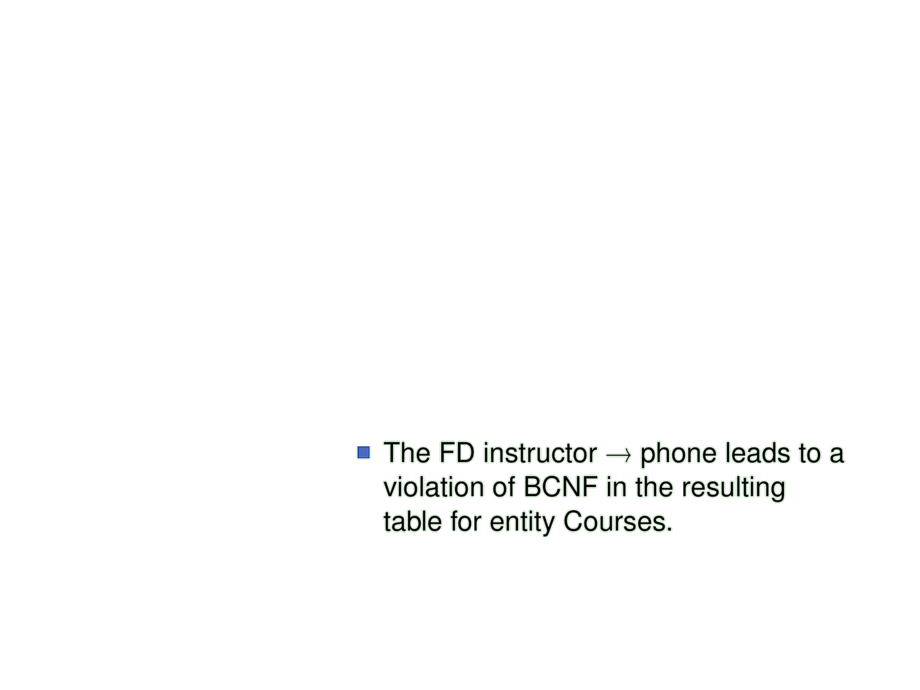



































































































265/291
\begin{frame}
\frametitle{Introduction}
\begin{goal}{}
If a ``good'' ER schema is transformed into the relational model,
the result will \emph{satisfy all normal forms} (4NF,
BCNF, 3NF).
\end{goal}
A normal form violation detected in the generated
relational schema indicates a \emph{flaw} in the input ER design.
\\[2ex]
This needs to be corrected on the ER level.
\smallskip
\pause
\begin{exampleblock}{FDs in the ER model}
The ER equivalent of the very first example in this chapter:
\smallskip
\begin{minipage}{.32\textwidth}
\scalebox{.9}{
\begin{tikzpicture}[every edge/.style={link}]
\node[entity] (customer) {Courses};
\node[attribute] [above left of=customer,node distance=1.7cm,shift={(-5mm,-3mm)}] {\key{courseNr}} edge (customer);
\node[attribute] [above of=customer,node distance=1.3cm] {title} edge (customer);
\node[attribute] [left of=customer,node distance=2.1cm,yshift=-1mm] {phone} edge (customer);
\node[attribute] [below left of=customer,node distance=1.5cm] {instructor} edge (customer);
\end{tikzpicture}
}
\end{minipage}
\begin{minipage}{.67\textwidth}
\begin{itemize}
\pause
\item
The FD $\text{instructor} \to \text{phone}$ leads to a
violation of BCNF in the resulting table for entity Courses.
\pause
\item
\alert{Also in the ER model, FDs between attributes of an entity set
should be implied by a key constraint.}
\end{itemize}
\end{minipage}
\end{exampleblock}
\end{frame}

